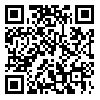Volume 1, Issue 2 (2013)
Health Educ Health Promot 2013, 1(2): 21-36 |
Back to browse issues page
Download citation:
BibTeX | RIS | EndNote | Medlars | ProCite | Reference Manager | RefWorks
Send citation to:



BibTeX | RIS | EndNote | Medlars | ProCite | Reference Manager | RefWorks
Send citation to:
Shamsi M, Hidarnia A, Niknami S, Rafiee M, Zareban I, Karimy M. The Effect of Educational Program on Increasing Oral Health Behavior among Pregnant Women: Applying Health Belief Model. Health Educ Health Promot 2013; 1 (2) :21-36
URL: http://hehp.modares.ac.ir/article-5-7635-en.html
URL: http://hehp.modares.ac.ir/article-5-7635-en.html
Mohsen Shamsi1, Alireza Hidarnia *2, Shamsaddin Niknami2, Mohammad Rafiee3, Iraj Zareban4, Mahmood Karimy5
1- Department of Public Health, Faculty of Health, Arak University of Medical Sciences, Arak, Iran
2- Department of Health Education & Health Promotion, Faculty of Medical Sciences, Tarbiat Modares University, Tehran, Iran
3- Department of Biostatistics, Faculty of Medical Sciences, Arak University of Medical Sciences, Arak, Iran
4- Department of Public Health, Faculty of Health, Zahedan University of Medical Sciences, Zahedan, Iran
5- Department of public Health, Faculty of Health , Arak University of Medical Sciences, Arak, Iran
2- Department of Health Education & Health Promotion, Faculty of Medical Sciences, Tarbiat Modares University, Tehran, Iran
3- Department of Biostatistics, Faculty of Medical Sciences, Arak University of Medical Sciences, Arak, Iran
4- Department of Public Health, Faculty of Health, Zahedan University of Medical Sciences, Zahedan, Iran
5- Department of public Health, Faculty of Health , Arak University of Medical Sciences, Arak, Iran
Abstract: (15626 Views)
Aims: The oral health is one of the most of public health problems and women with pregnancy have high risk for dental caries and need more attention. The purpose of this study was to assess the effectiveness of a health education intervention based on the Health Belief Model (HBM) on oral health behavior in pregnant women. Methods: This is a quasi-experimental study carried out on 130 pregnant women selected with random sampling method from health centers in Arak in 2011 (case and control groups each of 65 women). Data collection with questionnaire was based on construct HBM, as well as their knowledge and performance about oral health. The women of the case group participated during the two month of intervention and again two month after، with 2 session meeting classes as the follow up after intervention. The data were collected 3 months after intervention and analyzed. Findings: Our findings indicated that mean scores of HBM Model variables, i.e susceptibility, severity, benefit and barriers perceived, were significantly increased in the case group compared to the controls after intervention. Also, oral health care (before intervention 45 ±9.2, after three months 77±9.7) improved significantly among the case group, compared to the controls (p<0/001). Conclusion: Applying the HBM Model is very effective for developing an educational program for oral health in pregnant women. Besides such programs, follow up education on controlling and monitoring is highly recommended.
Article Type: Original Article |
Subject:
Family Health|Health Education|Theory and Model in Health Education and Promotion
Received: 2013/01/24 | Accepted: 2013/06/1 | Published: 2014/02/25
Received: 2013/01/24 | Accepted: 2013/06/1 | Published: 2014/02/25
| Rights and permissions | |
 |
This work is licensed under a Creative Commons Attribution-NonCommercial 4.0 International License. |





